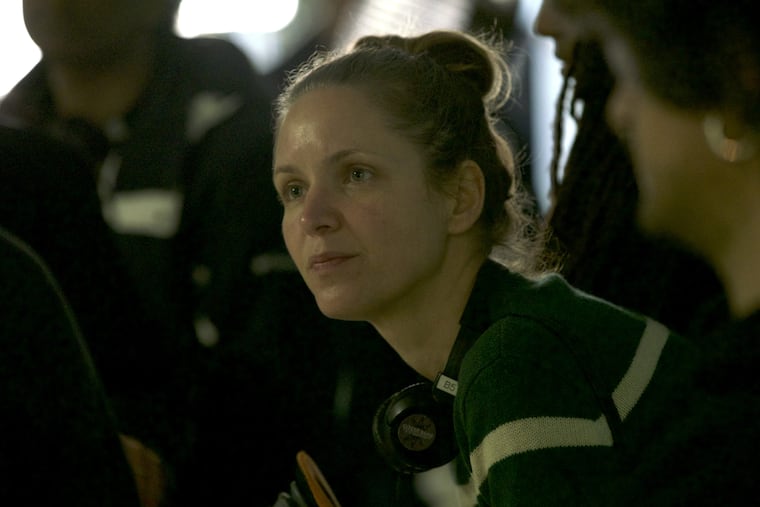‘Night Comes On’ director talks about shooting in Philly, and falling in love with the city.
A book of photos featuring North Philadelphia led actress/filmmaker Jordana Spiro to visit the city, which inspired the movie that became 'Night Comes On.'

When actress/director Jordana Spiro says she couldn't have made Night Comes On without Philadelphia, she's not buttering up a local journalist or playing to an audience.
A Spiro visit to the city a few years back was a major turning point for the movie — it opens here Friday — at that point a half-formed script, stalled by writers' block. (It has two writers, Spiro and Angelica Nwandu, founder of Instagram's @theshaderoom). It didn't have a plot, much less a specific setting.
"At that point we hadn't infused the script with any sense of place," Spiro said, "although we were hoping to, and thinking a city that would provide not just a setting, but some lyricism and some poetry."
Also, Spiro, at that time pregnant and living in New York, knew she wanted somewhere "close to home." Certainly closer than Los Angeles, where's she'd researched the project, which grew out of her volunteer work in foster care that she did between acting jobs. (Spiro is a busy actress who starred in the TV shows Ozark, My Boys, and Blindspot).
As she sought input into the story and its setting, she had a conversation with fellow filmmaker Jeremiah Zagar, as it happens a native of Philadelphia — his father Isaiah is the noted muralist. Zagar talked up the city, and recommended Daniel Traub's book of photography North Philadelphia, a collection that left Spiro transfixed.
She scouted the city, which she saw as ideal for her story of two sisters, ages 18 and 10, who reunite after separate lives in foster care.
>> READ MORE: Gary Thompson's review of Night Comes On — "a moving story of sisterly love'
"The photographs were just so beautiful – heartbreaking and heartwarming," she says. "I said, let's go. So we [Spiro and Nwandu] just went on this road trip, and all of a sudden something just opened up, and all of these ideas just flooded out.
"Just the fact that we were moving led to changes in the script. We felt, maybe this is what the story needs, too."
And so Night Comes On became a road movie of sorts. The older sister Angel (Dominique Fishback of The Deuce) is released from juvenile detention, locates her sister Abby (newcomer Tatum Marilyn Hall), and after a few false starts, they take a decisive trip from the city to the Shore (the film was shot in parts of Long Beach Island), one that defines their relationship and their futures.
Local streets and structures that Spiro loved ended up in the movie – she was so taken by the Strawberry Mansion Bridge, for instance, that she and Nwandu wrote a scene for it. And if she loved the city, the feeling was mutual.
Spiro, searching for locations featured in Traub's book, wandered around Master Street near Ridge Avenue, and struck up a conversation with a woman who ended up giving her a history of the neighborhood, which is also featured in Night Comes On.
Spiro is still impressed how friendly Philadelphians were – and how hip to the filmmaking process they seemed to be. She remembers shooting an exterior scene near Ridge Avenue, when one of the residents said, "You can use my apartment if you want to get a high angle."
There was no end of surprises. She cast Hall, the younger sister, in New York then found she had a large extended in family here in Philadelphia — they threw a block party during the production. One house used as a location in the film was owned by a woman whose son, Jwlz Ono, ended up providing a couple of music tracks for Night Comes On.
"One of the things I loved about the experience was just this string of incredible coincidences. It's like fate tapping you on the back and saying, 'You're moving in the right direction,' " she said.
That desire to move in the right direction led Spiro to work with foster-care children in the first place. She'd become an actress to contribute something "meaningful," and in those early L.A. days, the work she was doing was "not making me feel meaningful or that I was a very big contributor."
So she decided to "volunteer in a lot of different areas. One of them was in the foster-care community. And I just began to have such admiration for what these young men and women go through. I grew up with all of these safety nets, and I saw how these young people meet these incredible challenges, without any of that."